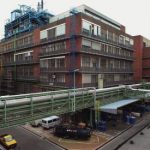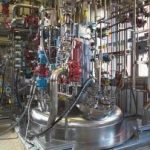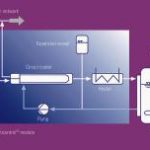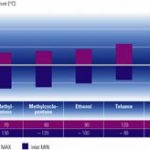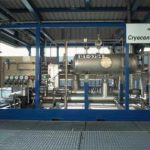Bayer AG, Germany, operates one of the world’s largest cGMP pilot plants of its kind at its Leverkusen site. The Central Organics Pilot Plant (ZeTO) is managed like a major plant within Bayer and is in charge of process development and piloting. When a custom synthesis was commissioned by an external customer, the original ZeTO infrastructure was not fit to attain the required low temperatures. Messer was consequently called in to provide a Cryocontrol pilot plant.
Karl Wiench, Thomas Kutz, Stefan Terkatz
Over the years, Bayer has gained a great deal of experience in the field of chemical process engineering. In addition to standard procedures from the field of organic chemistry, the company has also introduced various key technologies, such as low-temperature processes. The contacts between Bayer and Messer in the field of reaction control in the cryogenic temperature range go back more than a decade. Initial experiments in this field were carried out in the pharmaceutical pilot plant in Wuppertal, Germany. In the meantime, the process engineering has been tested extensively and its diverse utilisation is by no means confined to the Bayer Group. However, owing to the importance of this pilot plant, the introduction of the Cryocontrol process at the ZeTO in Leverkusen is a particularly significant project. Thanks to the new unit, Bayer is able to carry out low-temperature syntheses at the ZeTO for its own products as well as for customer commissions. The unit is connected to two reactors (400 and 2500 litres). Both production areas meet cGMP standards.
The task
Synthesis of metallo-organic compounds particularly involves safe and controlled implementation of the chemical reaction. By maintaining cryogenic temperatures as low as –120 °C during the reaction, it is possible to control them so that the desired products are formed with the least possible quantity of unwanted by-products. The Cryocontrol process from Messer meets the requirements of chemists and engineers for an efficient reactor cooling system:
- Continuous cooling of the reaction mixture down to –120 °C
- Homogeneous and constant temperature distribution in the reactor
- Continuous heating of the reactor content up to +60 °C
- Rapid changes in temperature even with large reactors, for example from room temperature to –100 °C in approx. 1 to 2 hours
- Environmentally friendly cryogen
The process
The Cryocontrol process draws on liquid nitrogen as a primary refrigerant source. Thanks to its low boiling point of 196 °C and its inert character, it is ideal for cryogenic reactor cooling. The process works with a secondary heat transfer circuit; this is connected between the liquid nitrogen source and the reactor.
If a suitable heat transfer medium is used, this circuit permits both cooling of the reactor to low temperatures and heating. In cooling mode, the heat transfer circuit in a closed-circuit cooler is cooled by liquid nitrogen. The nitrogen evaporates as the heat is transferred, and after heating can be used for further applications, such as inerting. In heating mode, the supply of nitrogen to the closed-circuit cooler is interrupted. The heat transfer medium is heated via an electrical flow heater.
By means of small temperature differences between coolant and product, it is possible to carefully and uniformly stabilise the temperature of the reactor contents. Products can thereby be produced that would not otherwise be possible with excessive undercooling (e.g. because of the formation of an ice layer on the cooling surfaces).
The heat transfer medium
The physical properties of the heat transfer medium are key factors in the application versatility of the Cryocontrol method. The medium should meet the following criteria:
- Good thermal transfer properties
- Low viscosity, especially in the low temperature range
- Low melting point
- High boiling point
- Good environmental compatibility
Based on these specific requirements, various media have become established in practice.
Advantages of nitrogen cooling
Constructing conventional refrigerators for the required low-temperature range entails considerable expenditure. The reactions concerned are, without exception, so-called batch reactions. This means that the reactor temperature is subject to constant change and the system keeps switching between cooling and heating mode. This constant stopping and starting can lead to greater wear on the refrigerator compressors and a correspondingly greater need for maintenance work. In addition, in many cases, investments in sophisticated refrigerator equipment do not pay off, as the low-temperature reactions are often only carried out for production campaigns of limited duration.
Furthermore, users expect rapid temperature switching. Here too, liquid nitrogen offers significant advantages compared with refrigerators. With only a little effort, it is possible to increase the peak cooling capacity. However, designing a mechanical refrigerator for maximum capacity generally results in a tremendous increase in investment costs.
The Cryocontrol process entails only a few moving parts. This results in correspondingly low attrition and maintenance requirements. The simple process ensures extremely high plant availability. This availability can be further increased by, for example, redundant pumps. This is a key advantage; a failure of the cooling system could result in an inability to control the exothermal reaction and thus lead to considerable damage to the production plant. Furthermore, when active pharmaceutical ingredients (APIs) or intermediate products are synthesised, the content of the reactor may be extremely valuable.
ZeTO project management
Bayer AG was initially commissioned to carry out a custom synthesis. The existing ZeTO infrastructure was not fit to enable the required cryogenic temperatures to be attained inside the reactors. However, at this point in time, the schedule was such that it was not possible to construct a new cryogenic cooling system. Messer was able to join the project at short notice and provide a pilot plant, including a tank system, for storing liquid nitrogen for the duration of the campaign. The intensive collaboration between the specialists at Bayer AG and Messer enabled an optimum solution to be developed.
The deployment of a pilot plant as provided by Messer can cover short-term, urgent requirements for low temperature cooling. At the same time, users are able to gain initial experience with the Cryocontrol process within their own production environments. They learn about the advantages of liquid nitrogen for cooling purposes and also become familiar with the system’s simple method of handling. After two campaigns, Bayer AG decided to purchase a cryogenic cooling system. On the strength of the positive experience acquired with the Cryocontrol process and the constructive collaboration, Messer was chosen as the system supplier.
Cryocontrol units are customised to meet the respective requirements and specific features of the individual application. Messer takes a comprehensive, overall view of the task at hand, considering not only the product itself but also the environment as a whole, in order to provide users with optimum, integrated solutions.
The plant for the ZeTO is a so-called package unit. This means that all equipment is thermally insulated and skid-mounted. This method of manufacture lends itself to the construction of units of this magnitude, since it minimises both the on-site assembly work and the time requirement. In this particular case, plant integration into the existing infrastructure took place on the roof of the building, where only a minimal amount of space was required. The nitrogen supply tank was installed in front of the building.
Summary
The plant in Bayer AG’s ZeTO is a further reference for the Cryocontrol process. Once again, the delivered solution was not an “off-the-peg“ standard product. Messer’s service includes intensive consultation, planning and execution of pilot experiments as well as planning of a new cryogenic unit, including commissioning. For Bayer, this service range, along with the accompanying flexibility and reliability, were the main arguments in favour of the new unit.
Liquid nitrogen continues to be the optimum solution when cooling has to take place in the cryogenic temperature range with low average cooling capacities (but sometimes high peak cooling capacities) for batches or campaigns.
cpp 406
Share:



